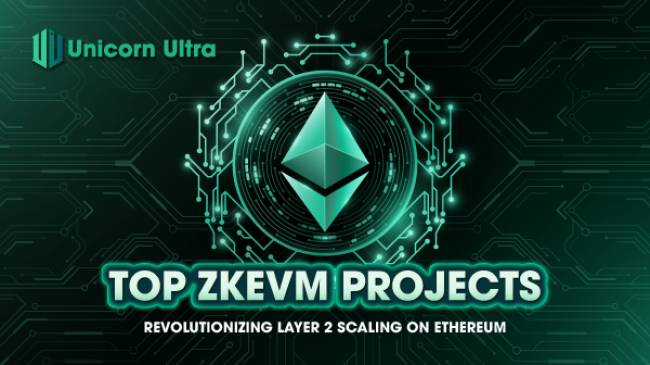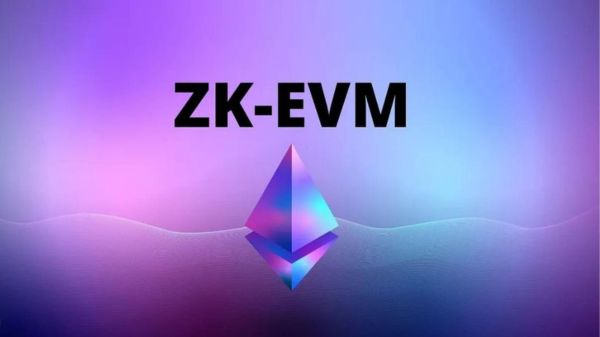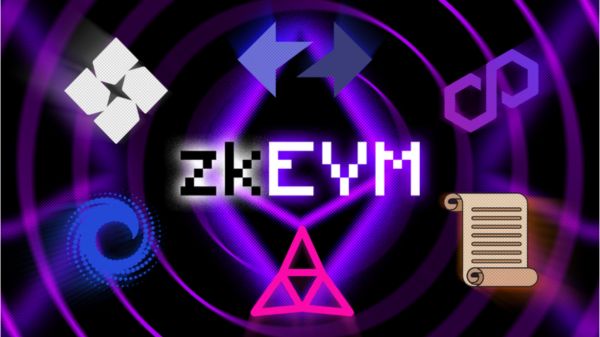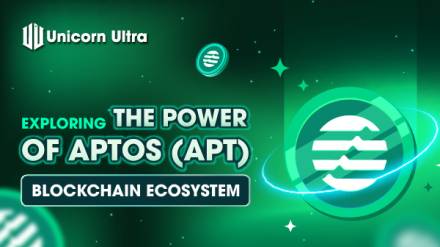Ethereum, the world's most popular blockchain for decentralized applications (dApps), has faced scalability challenges due to network congestion and high fees. To address these issues, various layer 2 scaling solutions have emerged, including zk-rollups and zkEVMs. In this blog post, we will delve into zkEVM projects, their benefits, and how they compare to zk-rollups. Furthermore, we will explore some of the top zkEVM projects currently making waves in the Ethereum ecosystem.
Table of Contents
Top zkEVM Projects

Polygon zkEVM: Polygon, a well-known Ethereum scaling solution, has introduced zkEVM to further enhance its capabilities. Polygon zkEVM combines the power of zero-knowledge proofs with Polygon's high-performance infrastructure, providing developers with a scalable and secure environment to build decentralized applications.
zkSync zkEVM (zkSync Era)
zkSync, developed by Matter Labs, is a layer 2 scaling solution that combines zk-rollups and zkEVM. zkSync zkEVM, also known as zkSync Era, brings the benefits of zero-knowledge proofs to zkSync, enabling efficient and cost-effective transactions while maintaining compatibility with existing Ethereum smart contracts.
StarkNet
Developed by StarkWare, StarkNet is a full-stack scalability engine for Ethereum. It combines zk-rollups with zkEVM, allowing developers to build scalable and privacy-preserving applications on Ethereum. StarkNet provides a powerful platform for dApps that require high throughput and low transaction costs.
Scroll
Scroll, developed by Loopring, is a layer 2 scaling solution that utilizes zkEVM technology. It enables developers to build highly scalable applications while benefiting from the security and composability of the Ethereum ecosystem. Scroll is designed to be user-friendly and developer-friendly, making it easier to transition existing Ethereum projects to layer 2 scaling.
Taiko zkEVM
Taiko is an upcoming zkEVM project developed by Aztec Network. It aims to bring privacy and scalability to Ethereum by integrating zkEVM technology. With Taiko, developers can build confidential and high-throughput applications while leveraging the composability and security of the Ethereum ecosystem.
Linea (ConsenSys zkEVM)
Linea, developed by ConsenSys, is a zkEVM project that focuses on scalability and privacy for enterprise applications. It combines the power of zero-knowledge proofs with ConsenSys' expertise in enterprise blockchain solutions, offering a secure and scalable environment for building privacy-centric applications.
Compare zkEVM Projects

Each zkEVM project has its own unique features and strengths. Some prioritize compatibility with existing Ethereum infrastructure, while others focus on scalability, privacy, or enterprise use cases. Developers should consider factors such as community support, documentation, developer experience, and ecosystem integrations when selecting a zkEVM project for their specific needs.
Advantages and disadvantages of zkEVM projects
zkEVM (Zero-Knowledge Ethereum Virtual Machine) projects aim to provide privacy and scalability solutions for Ethereum-based applications by utilizing zero-knowledge proofs. Here are some advantages and disadvantages of zkEVM projects:
Advantages
- Privacy: zkEVM projects offer enhanced privacy by allowing users to conduct transactions and execute smart contracts on Ethereum without revealing sensitive information, such as the transaction amount or contract details. This privacy feature is achieved through zero-knowledge proofs, which allow for the verification of computations without disclosing the underlying data.
- Scalability: zkEVM projects aim to address Ethereum's scalability limitations by leveraging zero-knowledge proofs to bundle multiple transactions into a single proof, reducing the computational overhead and improving overall network scalability. This can potentially alleviate congestion issues and enable faster transaction processing times.
- Interoperability: zkEVM projects generally aim to maintain compatibility with the existing Ethereum ecosystem. This means that applications and smart contracts developed for Ethereum can potentially be deployed on zkEVM networks, allowing for interoperability between the two ecosystems. This interoperability can help foster adoption and ease the transition for developers.
Disadvantages
- Complexity: zkEVM projects involve complex cryptographic protocols and zero-knowledge proofs, which can make their implementation and understanding challenging. This complexity may result in longer development cycles, increased auditing requirements, and potential security risks if not implemented correctly.
- Trade-offs: While zkEVM projects offer privacy and scalability benefits, they often involve trade-offs. For example, achieving high levels of privacy may require increased computational resources, leading to higher costs and slower transaction processing times. It is crucial to assess these trade-offs carefully to determine if the benefits outweigh the associated costs.
- Adoption and compatibility: zkEVM projects are still relatively new, and widespread adoption may take time. Compatibility with existing Ethereum infrastructure and tooling is important for the success of these projects. Ensuring that developers can easily integrate zkEVM solutions into their existing workflows and projects is crucial for their adoption.
It's important to note that the advantages and disadvantages mentioned above are general observations and may vary across different zkEVM projects. As the technology continues to evolve, it's essential to assess specific implementations and their respective trade-offs.

Which Project Will Have a Chance to Win?
It is difficult to predict which zkEVM project will ultimately come out on top. The Ethereum ecosystem is rapidly evolving, and competition is fierce. The success of a zkEVM project will depend on various factors, including developer adoption, scalability improvements, security, and ease of integration. Additionally, the support and engagement of the Ethereum community will play a crucial role in determining the long-term viability and success of these projects.
What do zkEVM projects plan to develop in the future?
As of my knowledge cutoff in September 2021, zkEVM projects were still in their early stages, and their future development plans may vary depending on the specific projects and teams involved. However, here are some potential areas that zkEVM projects might focus on in the future:
- Enhanced scalability: zkEVM projects may continue to explore ways to improve the scalability of Ethereum and other blockchain networks. This could involve optimizing zero-knowledge proof generation and verification processes, exploring off-chain solutions, or leveraging layer-two solutions such as zk-rollups or optimistic rollups.
- User experience improvements: As with any emerging technology, enhancing the user experience will be crucial for the adoption of zkEVM projects. Future developments might focus on simplifying the integration process for developers, reducing transaction costs, and improving transaction confirmation times to make the user experience more seamless and efficient.
- Protocol upgrades and standardization: As zkEVM projects mature, there may be a need for protocol upgrades and standardization efforts to ensure interoperability and compatibility between different implementations. This could involve the establishment of common standards, formal verification methodologies, and robust security audits to enhance trust and reliability.
- Cross-chain interoperability: zkEVM projects may explore cross-chain interoperability to connect with other blockchain networks and enable the transfer of assets and data across different ecosystems. This could involve developing bridges or interoperability protocols that allow zkEVM networks to interact with other blockchains and decentralized finance (DeFi) platforms.
- Governance and community involvement: Future developments may focus on establishing governance models and involving the community in decision-making processes. This could include mechanisms for token holders to participate in protocol upgrades, voting systems, and initiatives to foster community contributions, audits, and security research.
It's important to note that these are speculative directions, and the actual development plans and priorities of specific zkEVM projects will depend on the respective teams and the evolving needs of the blockchain ecosystem.
Conclusion
In conclusion, zkEVMs hold great promise for revolutionizing layer 2 scaling on Ethereum. Top zkEVM projects like Polygon zkEVM, zkSync zkEVM, StarkNet, Scroll, Taiko zkEVM, and Linea are at the forefront of this innovation, offering developers the opportunity to build scalable, secure, and privacy-centric applications. As the Ethereum ecosystem continues to grow and evolve, the adoption and success of zkEVM projects will shape the future of decentralized applications on the Ethereum network. Let's go with U2U to follow the latest information on the market.






